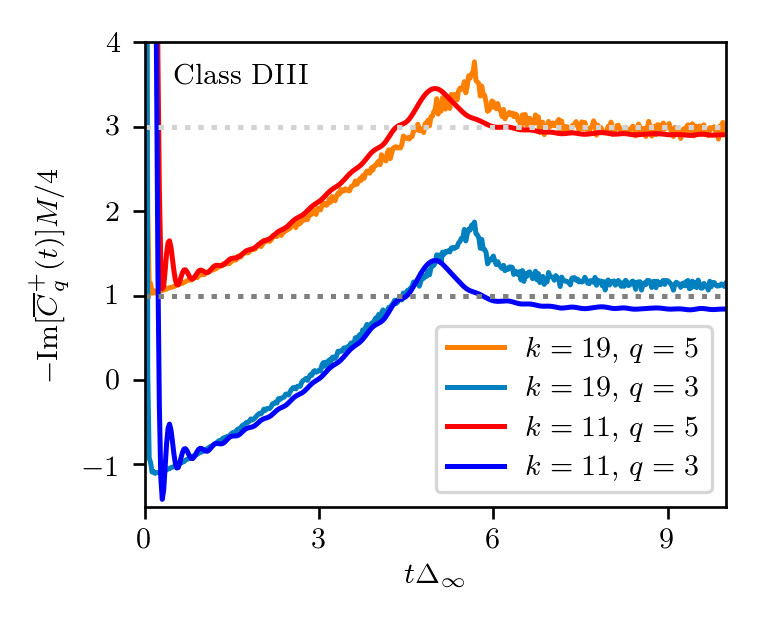Research Highlights
Vanilla flavored supersymmetry
The authors discover supersymmetry hidden in a plain "vanilla" model for maximal quantum chaos.

Correlation functions reveal structure in chaos. Their long-time limit equals the number of supercharges and their transformation under time-reversal (here: 1 and 3 supercharges).
What is quantum chaos and how is it related to black holes? Chaotic systems distribute any inserted information over themselves; the speed of this distribution of information reveals the degree of chaos. The Sachdev-Ye-Kitaev (SYK) model is the archetypical example for the maximum possible degree of quantum chaos. Its behavior is fundamentally linked to black holes, where information seems to disappear beyond their event horizon.
The authors showed that the SYK model is supersymmetric in its "vanilla" form without any fine-tuning of its parameters. This at first sounds paradoxical: How can a chaotic system at the same time be symmetric, let alone supersymmetric? It turns out that certain properties of the supersymmetry determine how information spreads — in other words, how chaos spreads — through the system; the supersymmetry thus brings structure into chaos. The analysis of this work is the basis for further research that explores different regimes of the model and the consequences of vanilla supersymmetry for black holes.
Supersymmetry in the Standard Sachdev-Ye-Kitaev Model. Jan Behrends and Benjamin Béri, Phys. Rev. Lett. 124, 236804 (2020)